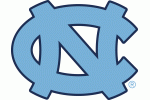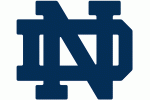Sports attract many students to schools and generate considerable income for these institutions. The NCAA is one organization that assists with this. The National Collegiate Athletic Association is the national governing body for collegiate sports. With three levels, this organisation has handed out billions of dollars to support college sports across 112 conferences and approximately 2000 schools for over a century.
The Brief History of the NCAA
In the early 1900s, it was common for collegiate athletes to be exploited. Hence, the first goal of this organization was to safeguard them from such exploitation. The NCAA was founded in 1906 and initially concentrated mainly on football teams. A few years later, the whole college football league was in trouble. On the verge of decommissioning, the NCAA assembled many representatives and restructured the safety standards and directions for the athletes. Since then, the organization has expanded to encompass other sports and is constantly revising its rules and regulations.
In 1910, the name of the NCAA was changed from the Intercollegiate Athletic Association (IAA) to the National Collegiate Athletic Association (NCAA). The NCAA is a non-profit organization that supervises collegiate athletics and student-athletes at about 1,100 North American colleges. However, we have several fans interested in making money with NCAAF bets.
According to the NCAA, its member schools annually provide sports scholarships totalling more than $3.6 billion to over 180,000 student-athletes. It establishes rules for play in an increasing list of 24 men's and women's sports, ranging from football and basketball to softball and water polo.
The present three-division structure of Division I, Division II, and Division III was created in 1973 to help level the playing field for teams from comparable schools. Establishing separate categories increased gender equality and allowed schools with fewer resources to compete for championships. Each division has its scholarship, eligibility, and resource allocation policies.
The Responsibilities of the NCAA
The NCAA is primarily responsible for overseeing championships and establishing and enforcing regulations for its member colleges. Many NCAA regulations concern athlete financial assistance, recruitment, and eligibility determination. In addition, the NCAA handles modifications and improvements to several sports it regulates. The NCAA is organized into three divisions: Division I, Division II, and Division III.
Division I
Football programs at the Division I level are further classified into the Football Bowl Subdivision (FBS) and the Football Championship Subdivision (FCS).
In intercollegiate sports, the divisions aim to provide parity and a fair playing field. Additionally, the establishment of divisions allows smaller schools with fewer resources to compete for championships.
Division I institutions have the greatest student populations, athletic budgets, and sports scholarships. More than 350 colleges field over 6,000 teams, giving over 170,000 NCAA Division I student-athletes opportunities.
Division II
Nearly 300 schools comprise Division II. There are still sports scholarships available at Division II schools, but the number is far less than at Division I schools. In Division I, full athletic scholarships are more prevalent, while most Division II players get partial sports scholarships. Division II colleges and sports departments have fewer budgets than those in Division I. While Division I colleges often travel to national competitions, Division II schedules are dominated by regional rivalries.
Division III
There are 444 institutions and over 170,000 student-athletes in Division III. A fundamental distinction between Division III and Division I is the absence of sports scholarships. Nonetheless, the majority of athletes get some type of academic or need-based assistance. In Division III, there are also fewer practice hours and less travel for games. In Division III, the significance of athletic participation to the individual is emphasized. Less emphasis is placed on making cash and producing spectator events.
Key Points:
- Division I teams have the greatest prestige, the most financial resources, and the best athletes. Division I schools are also, on average, the largest.
- Division II still grants scholarships, but they are rarer and smaller than in Division I, and Division II colleges often have fewer athletic department funds and fewer sports teams. Division I colleges provide an average of 18 sports, while Division II institutions offer an average of 15 sports.
- Division III does not award sports scholarships, has the lowest level of competitiveness, and has the most players of all levels. Each school in Division III offers an average of 18 sports. Additionally, Division III has the highest average student participation rate in athletics.





















